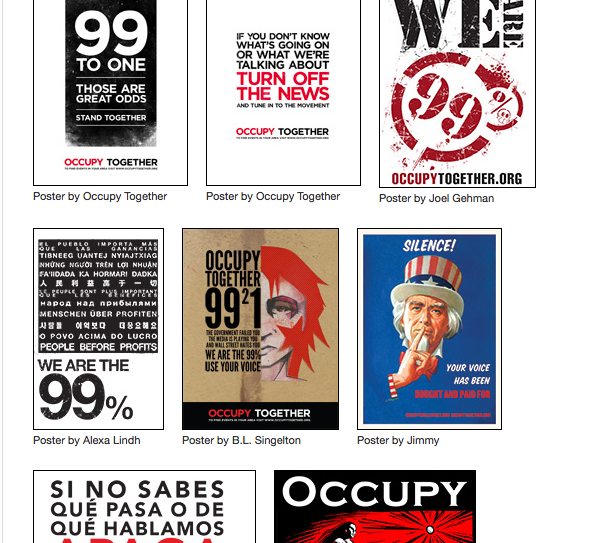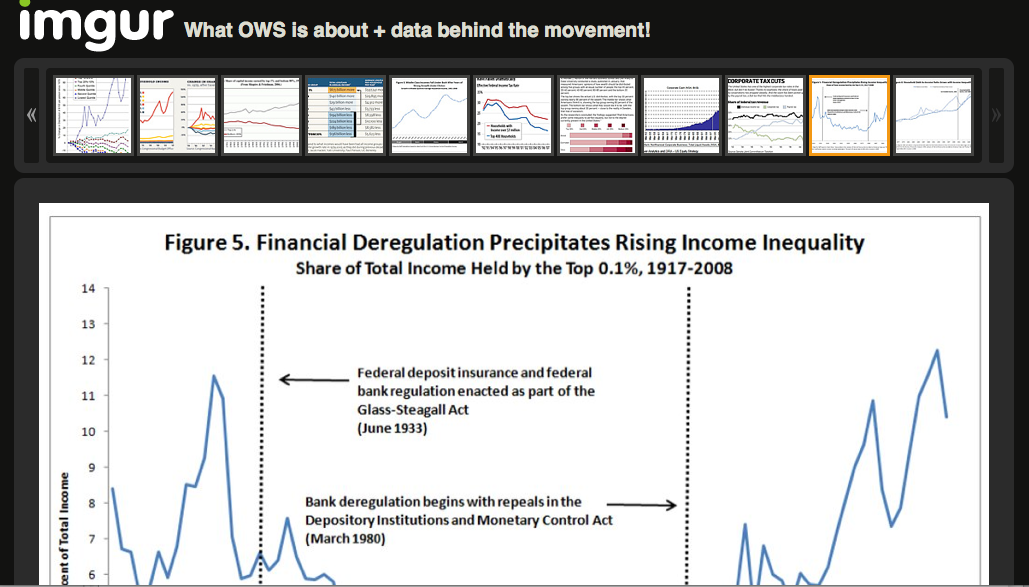Tactic: Ready to Go and Ready-Made
Despite the presence of celebrity, which can in some cases, offer legitimacy and a significant level of visibility to a social/political cause, much of the attention and imagery that we see on a daily basis coming out of Occupy is largely ephemeral and makeshift. On the other side of the DIY spectrum is an attempt to formalize the messaging that takes advantage of widespread access to technology such as design programs, high speed internet, color printers.
Cardboard and Markers
Many signs are on cardboard scrawled with messages in average handwriting. These signs often show individual style and in many cases, a unique take and clever word play tied to the movement and its message. The messages are diffuse. They feel spontaneous, even hasty.
Makeshift galleries have formed at various Occupy sites, where the ground or curbside has become a place of display for a multitude of signs and messages.
Social media and mainstream news sites are documenting and archiving these signs, allowing for a level of permanence, potential staying power and relevance. Here, the Huffington Post asks readers to submit their photos and vote for their favorite sign.
Photoshop and Printers
Occupy George, Occupy Together, Occupy Design all offer files that have a higher production value than the cardboard signs.
Some Occupiers take advantage of the modern conveniences of today’s protesting. You’re still doing-it-yourself, but you’re choosing from one of many templates, downloadable as PDFs.
The role of infographics on the web is another important corollary, indicating the significant role data can play in legitimating the cause. The information provided on such sites provides opportunities for teaching and learning through visualizing the rationale behind the protest.
Next: Tactic: Making the Occupation Visible








[…] Visual Culture of the Occupation. […]